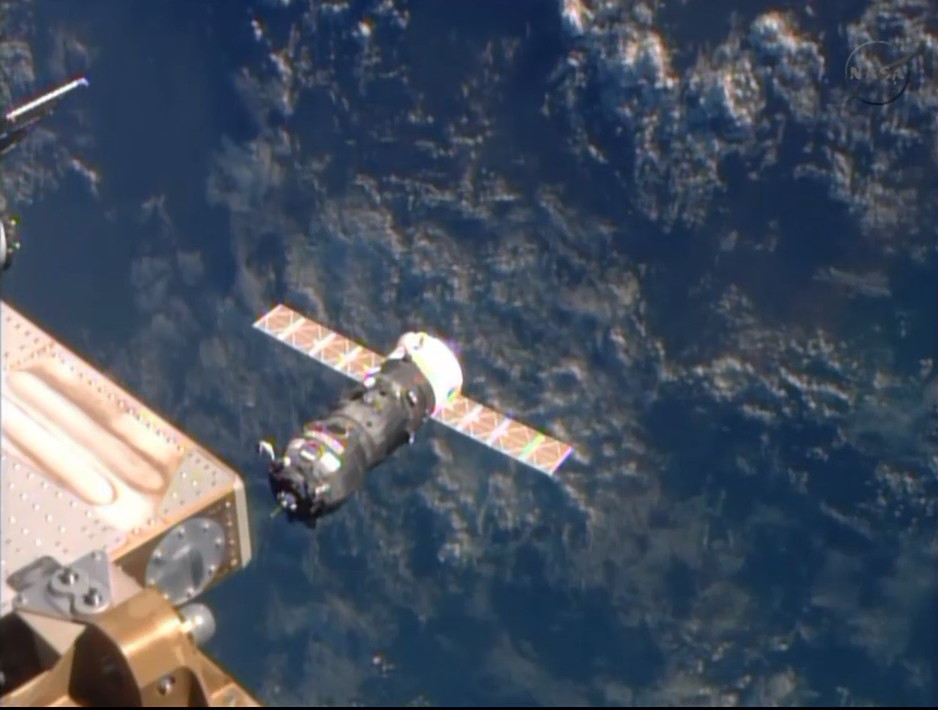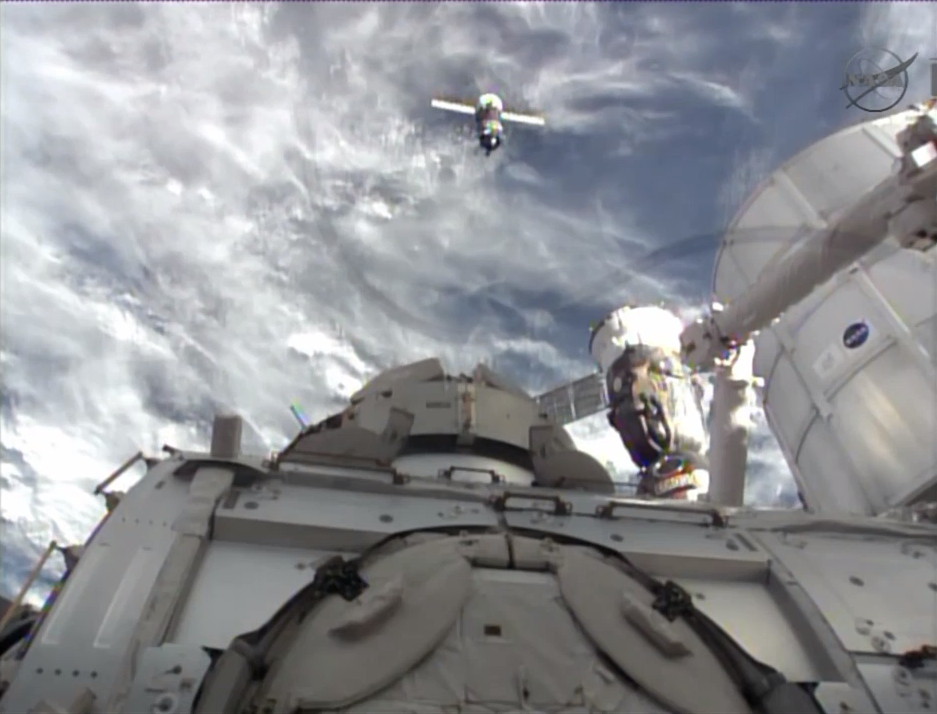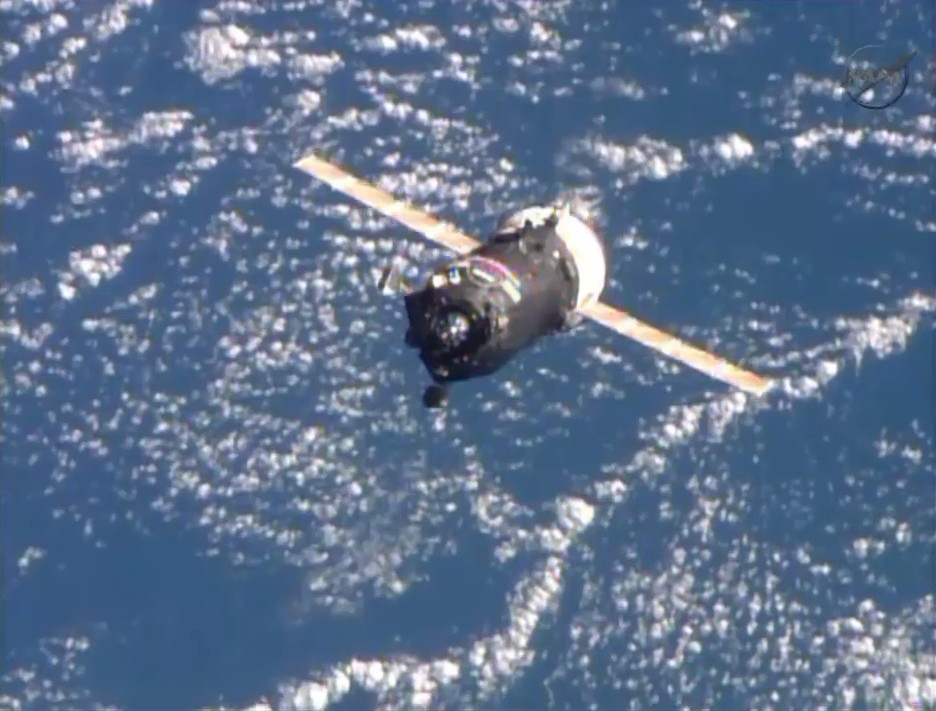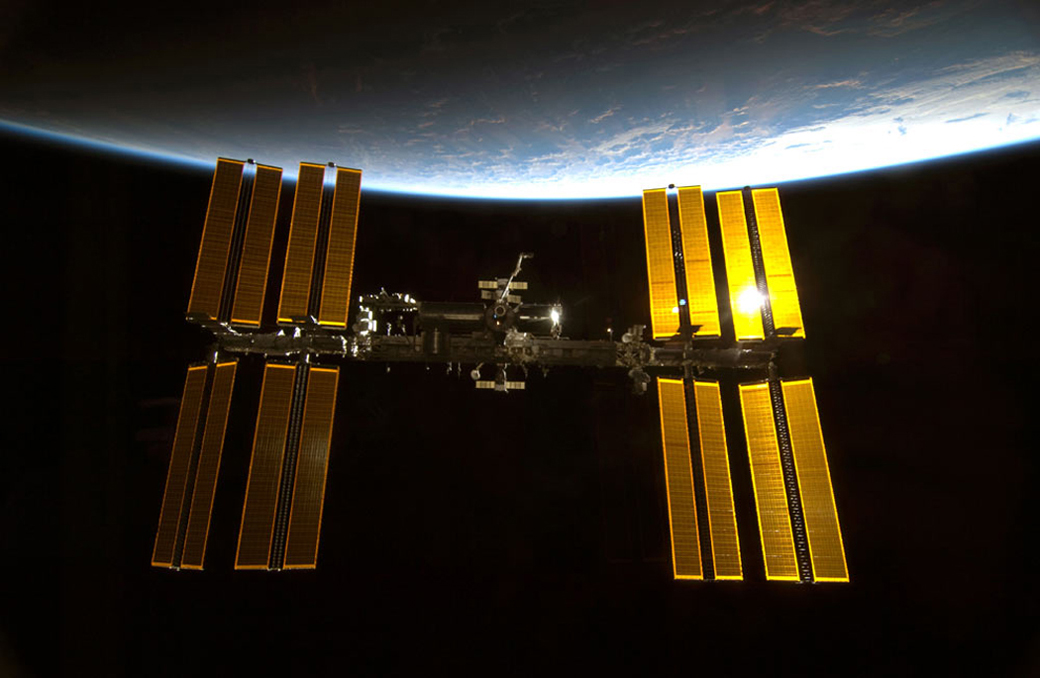Robotic Russian Cargo Ship Docks with Space Station after Express Flight

An unmanned Russian cargo spacecraft docked with the International Space Station today (Feb. 5) to deliver supplies to the crewmembers manning the space laboratory after a quick trip through space.
The Russian Progress 54 vehicle docked to the station as both flew 261 miles (420 kilometers) above the Atlantic Ocean at 5:22 p.m. EST (2222 GMT). The spacecraft docked about six hours after launching atop Russia's Soyuz rocket from the Baikonur Cosmodrome in Kazakhstan. Robotic Progress ships have done these accelerated station runs since 2012. The supply ship is loaded down with 2.8 tons of spare parts and other cargo for the Expedition 38 crew currently on the orbiting outpost.

Station residents look forward to cargo ship arrivals "because typically there are some fresh fruits for the crewmembers onboard as well," NASA spokesman Kyle Herring said during a NASA TV broadcast of the docking. [See launch photos of Russia's Progress 54 cargo ship]
Progress 54 is now attached to the station's Earth-facing Pirs docking compartment. Another Progress ship — Progress 52 — undocked from Pirs earlier this week, making room for the fresh resupply craft to come into port. Progress 54 has now delivered 1,764 lbs. (800 kilograms) of propellant, 2,897 lbs. (1,314 kg) of spare parts, 926 lbs. (420 kg) of water and 110 lbs. (50 kg) of oxygen, according to NASA. Progress 53 remains attached to the station's Zvesda service module.

After leaving the station, Progress spacecraft are designed to disintegrate in Earth's atmosphere. The three-module supply ships are somewhat like Russia's Soyuz capsules used to bring humans to the station. Instead of a crew module, however, Progress spacecraft have a module filled with fuel.
NASA has penned contracts with two private spaceflight firms that fly resupply missions to the space station. Both Orbital Sciences Corp. and SpaceX use their spacecraft and rockets to deliver cargo to the crewmembers on the outpost. Japan's H-2 Transfer Vehicles and Europe's Automated Transfer Vehicles also deliver goods to low-Earth orbit.

Six spaceflyers make up the space station's Expedition 38 crew. Russian cosmonauts Mikhail Tyurin, Sergey Ryazanskiy and Oleg Kotov, NASA astronauts Rick Mastracchio and Mike Hopkins and Japanese space agency astronaut Kiochi Wakata all currently live and work aboard the station.
Get the Space.com Newsletter
Breaking space news, the latest updates on rocket launches, skywatching events and more!
Kotov, Ryazanskiy and Hopkins are expected to fly back to Earth on their Soyuz spacecraft in March 2014, while Mastracchio, Wakata and Tyurin are scheduled to leave the station in May 2014.
Follow Miriam Kramer @mirikramer and Google+. Follow us @Spacedotcom, Facebook and Google+. Original article on Space.com.
Join our Space Forums to keep talking space on the latest missions, night sky and more! And if you have a news tip, correction or comment, let us know at: community@space.com.

Miriam Kramer joined Space.com as a Staff Writer in December 2012. Since then, she has floated in weightlessness on a zero-gravity flight, felt the pull of 4-Gs in a trainer aircraft and watched rockets soar into space from Florida and Virginia. She also served as Space.com's lead space entertainment reporter, and enjoys all aspects of space news, astronomy and commercial spaceflight. Miriam has also presented space stories during live interviews with Fox News and other TV and radio outlets. She originally hails from Knoxville, Tennessee where she and her family would take trips to dark spots on the outskirts of town to watch meteor showers every year. She loves to travel and one day hopes to see the northern lights in person. Miriam is currently a space reporter with Axios, writing the Axios Space newsletter. You can follow Miriam on Twitter.









